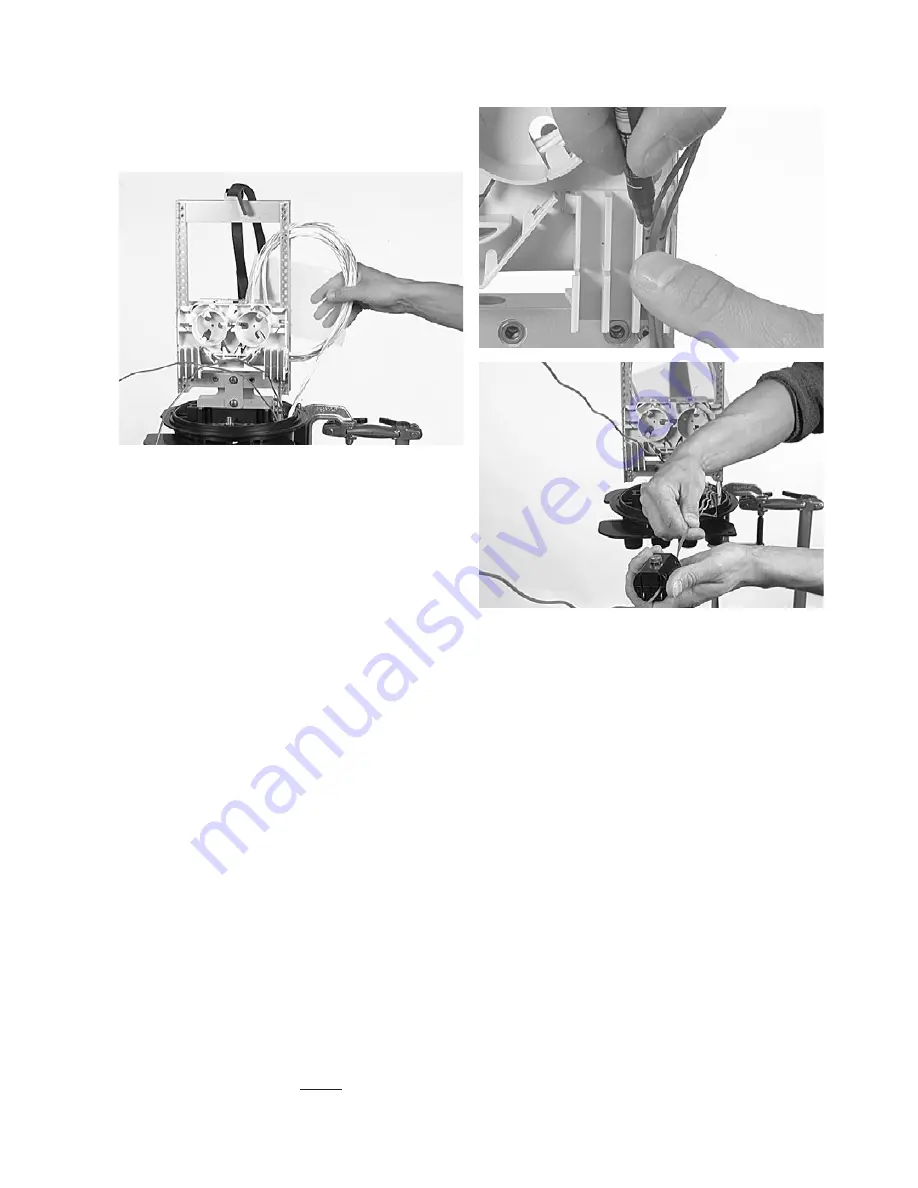
6
4.1.13 Position the loop bracket in the bottom bracket and lock with
the split pin.
4.1.14
Install heatshrink.
4.1c
Loose buffer tube storage
4.1d
Fiber storage in trays
4.1.15 Select the loose tube(s) with the fibers that have to be spliced.
4.1.15 Make some loops with the uncut loose tubes, and put these in
the plastic bag (Be careful not to damage the loose tubes!).Two sizes of
bags are available. Use the correct size according the volume of the
loose tubes.
Slide the bag between the UMS. If the capacity of the looped loose
tubes is too much, one puts the loops at one side; in this case fix the
plastic bag with the tubes on the UMS-profiles with tie-wraps. In case
of S-cable cut the loose tube(s) in the middle of the loop for routing
them to the tube holder.
Remark: Loose tubes routed up to the tube holder should be
routed in such a way that one still has complete access of the
stored tubes between UMS profile. This is needed for later
routing of loose tubes from the loops to the tube holders,
without creating crossings and without creating disturbances
on the loose tubes already routed up to the tube holders.
4.1.16 In case of reversed oscillating cable: separate the loose tube(s).
Match the loose tube(s) on the tubeholder and mark both sides
between the two marks. Shave between the two marks with the
appropriate tooling. Clean the fibers and wind some Teflon around the
ends of the tubes and fibers ,to protect the transition from tube to
fibers.
In case of S-cable: cut the loose tube(s) (with fibers that have to be
spliced) in the middle of the loop. Separate the cut loose tube(s) from
the others. Match the loose tube(s) on the tubeholder and mark both
sides. Strip the loose tube(s). Clean the fibers.
- Separate the fibers till the tubeholder and route to single circuit or
single element tray(s).







































